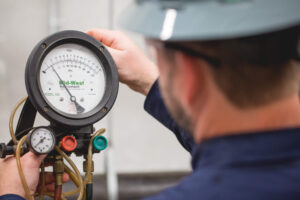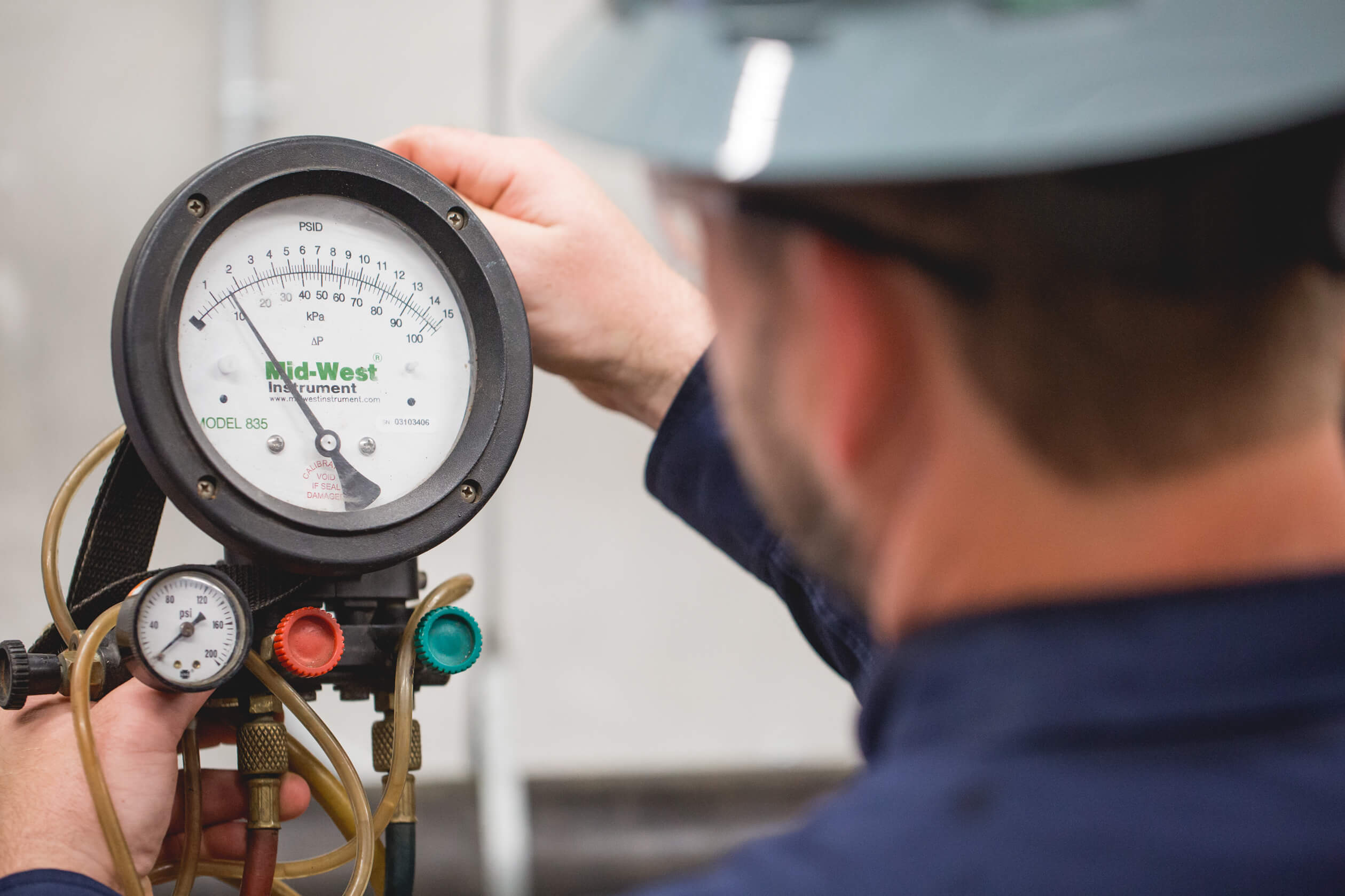Backflow testing is a crucial process that keeps dirty water from contaminating clean drinking water. It’s also a requirement for many homeowners and is generally done by a licensed plumber.
Backflow tests involve closing and opening several valves while checking a few pressure gauges. Fortunately, there are tools to streamline this process. Consult Plumber The Woodlands for professional expertise.
Backflow prevention devices are used to prevent contamination of potable water supplies. This means that they prevent any chemicals, toxins, or debris from flowing back down a water supply line into homes, businesses, or city water mains. If you’ve ever noticed discolored or murky water in your sink or shower, this could indicate that your backflow preventer isn’t working properly.
There are many different types of backflow preventers, and the type you’ll need will depend on the degree of risk involved. A low-hazard cross-connection may create a nuisance or be aesthetically objectionable but wouldn’t pose a health hazard, while a high-hazard cross-connection could introduce organisms that cause illness or death into the public water system.
When you purchase a backflow device, the manufacturer will include a label that indicates what kind of backflow it protects against. The most common kinds of backflow preventers include atmospheric vacuum breakers, double-check valves, and reduced pressure zone assemblies (RPZ). Atmospheric vacuum breaker devices use a spring-loaded check valve to seal off the backflow area when the water flow is in a downstream direction. They protect against both backsiphonage and backpressure, but don’t protect against reversal of the direction of flow caused by a change in pressure. Double-check valves use two independent check valves to prevent backflow of contaminated water. RPZ assemblies, which are more reliable than double-check valves, are designed to protect against both backsiphonage and pressure.
Regardless of the type of backflow prevention device you’ve chosen, it is important to have it tested annually by a licensed plumber like Hutchinson. This will ensure that the device is functioning correctly and that your drinking water is safe to drink.
If you’re concerned about the quality of your home’s water, call us today to schedule a backflow test. We’ll help you keep your water clean and healthy!
Test-Cocks
Test cocks are used to attach a backflow test gauge to the backflow assembly during testing. They are available in brass and plastic and can be purchased separately or as part of a complete test kit. Our test cocks are lead free and meet SDWA requirements. They are handleless and use a wrench or screwdriver to open and close. They have a full port ball valve and are designed to be used with Deringer or Magnum backflow assemblies. We also carry a special test cock wrench that fits these valves perfectly. Protect your test cocks by installing caps or plugs when you are not using them.
Pressure Gauges
Pressure gauges are the main instrument used to determine whether backflow is occurring or not. They’re usually a circular dial with a glass or tempered window to allow you to view the measurement. The size of the dial is based on where it’s going to be placed, how frequently you need to read it, and how accurate it needs to be. Dials can range from 1.5 inches to 16 inches, and there are a variety of connection options, too. Most commonly, they connect to the backflow prevention device with NPT (national pipe thread) or G (general purpose) connections.
The main reason backflow testing is required is to protect the quality of drinking water in your area. If the H2O in your system flows backward, it could reach the sewer line and collect fecal matter, pesticides, and other pollutants that are dangerous to humans. Backflow prevention devices prevent this from happening by ensuring that water flows into your property in one direction.
But even if you have backflow prevention devices, there are still reasons to get your backflow tested. Backflow can occur when a pressure change affects the main supply line and allows water to trickle in the opposite direction. This can happen due to fire hydrants, water main breaks, system maintenance, or other events. If it does, it can contaminate the public water supply with impurities that can be harmful to people’s health, including dysentery, typhoid, and Salmonella.
In addition to keeping water clean, backflow tests also help prevent damage to buildings and other structures. When H2O travels backward, it can suck dirt, fertilizers, pesticides, and other pollutants into plumbing systems, which can lead to corrosion. This can cause leaks and other serious problems for your home or business.
A certified backflow tester will isolate the backflow preventer valve during a test to ensure that water isn’t flowing backward while he or she performs the test. They will also use specialized equipment like gauge assemblies and test kits to measure water pressure, check for contaminants, and assess the functionality of backflow prevention devices.
Test Procedures
Backflow tests might seem like a small part of your to-do list, but failing to get them done will only lead to problems down the line. The most obvious problem is that contaminated water could come back into your home’s plumbing. That’s a pretty unpleasant scenario for anyone, but it could also cause damage to your property.
Back flow testing is designed to make sure your backflow preventers are doing their job, protecting you and the public water supply from contamination. That’s because backflow can contaminate the main water supply with things like fertilizers, pesticides, human waste, and harmful chemicals that might find their way into your property’s plumbing and irrigation systems.
A backflow test makes sure your backflow prevention device is working properly by letting a certified tester take a look at the pressure of the system and its gauges. They’ll start by shutting off your water service, then open and close valves on the backflow prevention device. While they’re doing that, they’ll take a look at the pressure and record the results.
The test procedures vary depending on the type of backflow preventer. For example, a backflow test for double check backflow preventers needs to be performed differently than an air gap test. Testers will use a combination of valves, pressure gauges, and test cocks to test each aspect of your device. They’ll also test for signs of backflow, including changes in the gauges and a lack of an air gap between potable and non-potable water.
This can be a pretty complicated procedure, which is why it’s best to hire a professional plumber to handle it for you. A qualified Kiddco plumber will be able to ensure your backflow preventer is tested correctly and that the results are submitted directly to your local water utility company. They’ll also be able to handle the process of temporarily disconnecting your water service when necessary. This is a vital step in the test, and you shouldn’t try to skip it or you could face fines and potential water shortages down the line.
